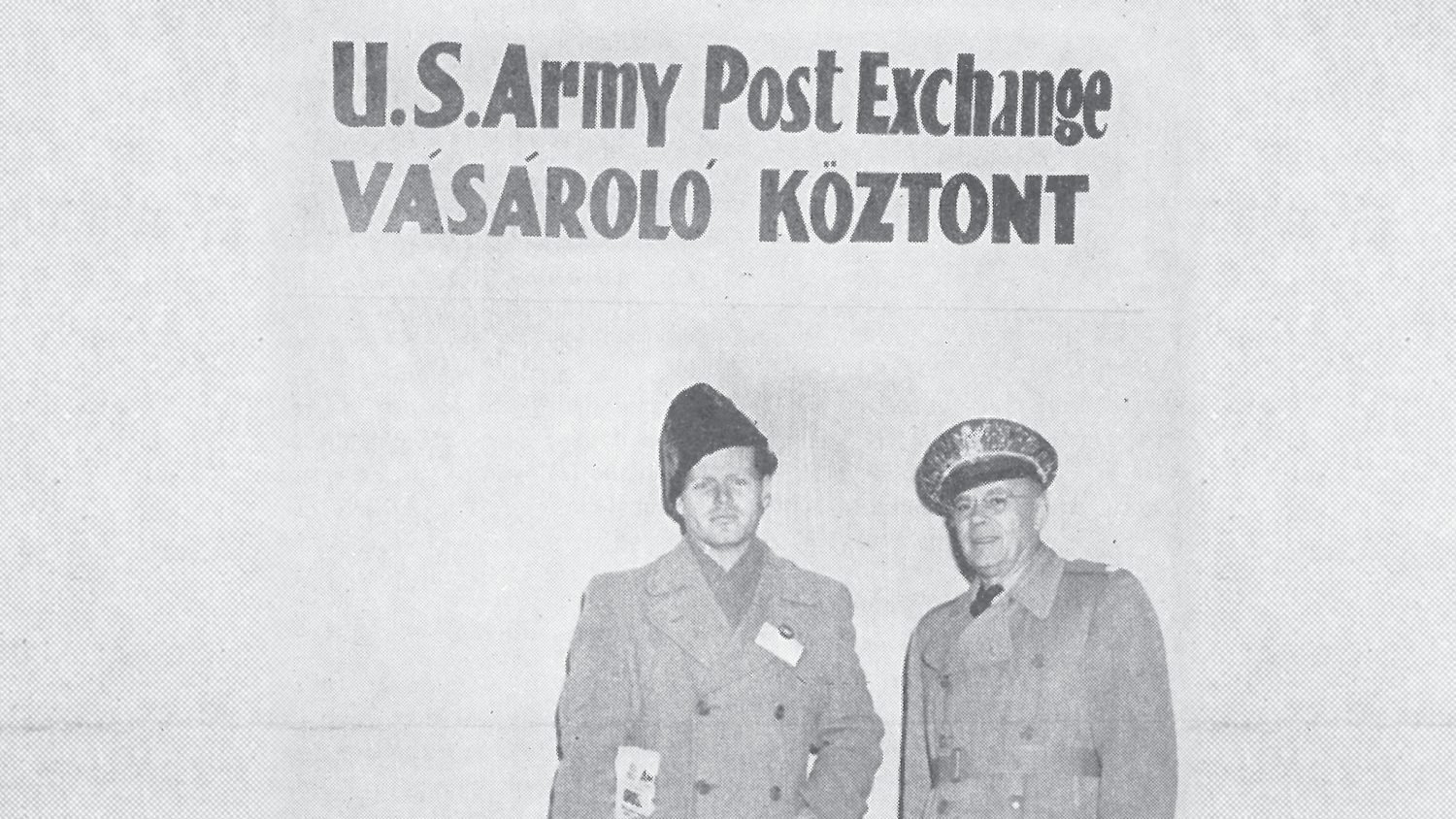#FlashbackFriday: 66 Years Ago, the Exchange Welcomed Hungarian Refugees to the U.S.

On Dec. 9, 1956—66 years ago today—President Eisenhower announced that 15,000 Hungarian refugees would be allowed to enter the United States after Soviet troops crushed an uprising in Budapest.
Operation Safe Haven, also known as Operation Mercy, began. Thousands of refugees were transported from Munich, West Germany, to Camp Kilmer, N.J., which was renamed Camp Mercy for the occasion.
Associates at the Fort Dix Exchange, which assumed responsibility for the opening of Exchange facilities at Camp Kilmer, worked around the clock to set up facilities at the camp.

In a January 1957 Exchange Post photo, a Hungarian customer stands with Lt. Col. Ernest Scheuder, Fort Dix Exchange Officer, before a sign identifying one of the shopping centers in Hungarian.
The Camp Mercy Exchange served incoming Army personnel who were setting up mess halls, rec rooms, barracks and other facilities, as well as providing Hungarians with items such as toothpaste, tobacco and candy.
Most of the first arrivals were women and children, coming in at the rate of three plane loads a day. A sign over the Camp Kilmer/Mercy gate read “Isten Hozta,” Hungarian for “God Brought You.” Hungarian-speaking salesclerks—recruited from nearby New Brunswick, N.J., which had a strong Hungarian-American population—were behind the counters.
Camp Kilmer, which opened during World War II, closed in 1963. Rutgers University now sits on the majority of the land.

In a January 1957 Exchange Post photo, Lt. Col. Ernest Scheuder helps a Hungarian child at Fort Dix open a carton of ice cream.
The Exchange continues to support people escaping from oppression. Beginning in 2021, 65 years after Operation Mercy, the Exchange served 80,000 Afghan guests during Operation Allies Welcome. One of the locations that provided support was Fort Dix, now part of Joint Base McGuire-Dix-Lakehurst.

